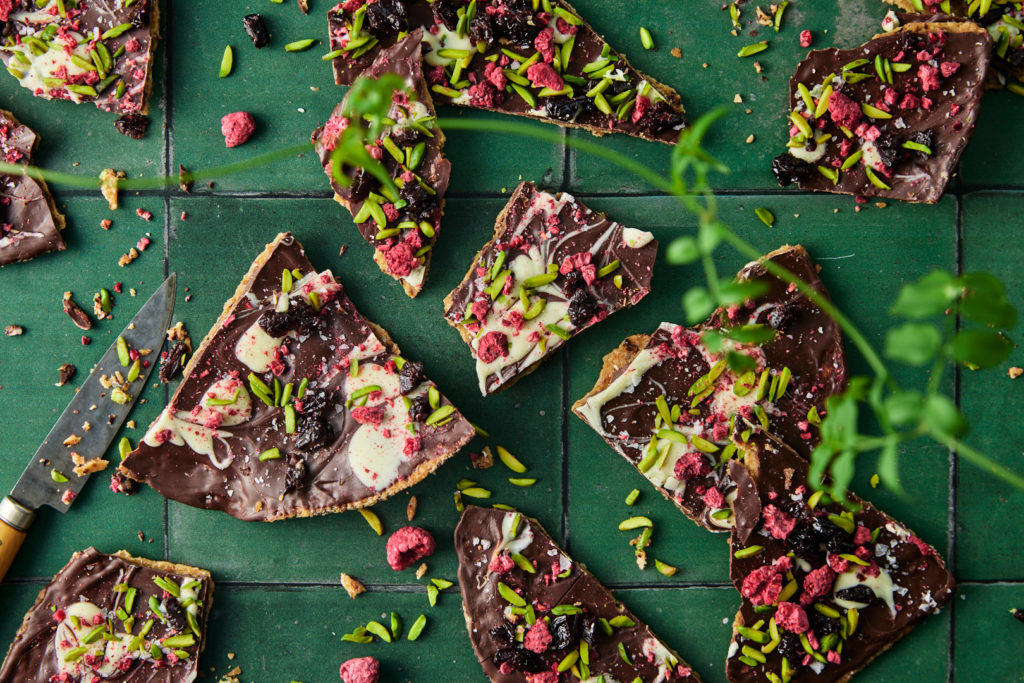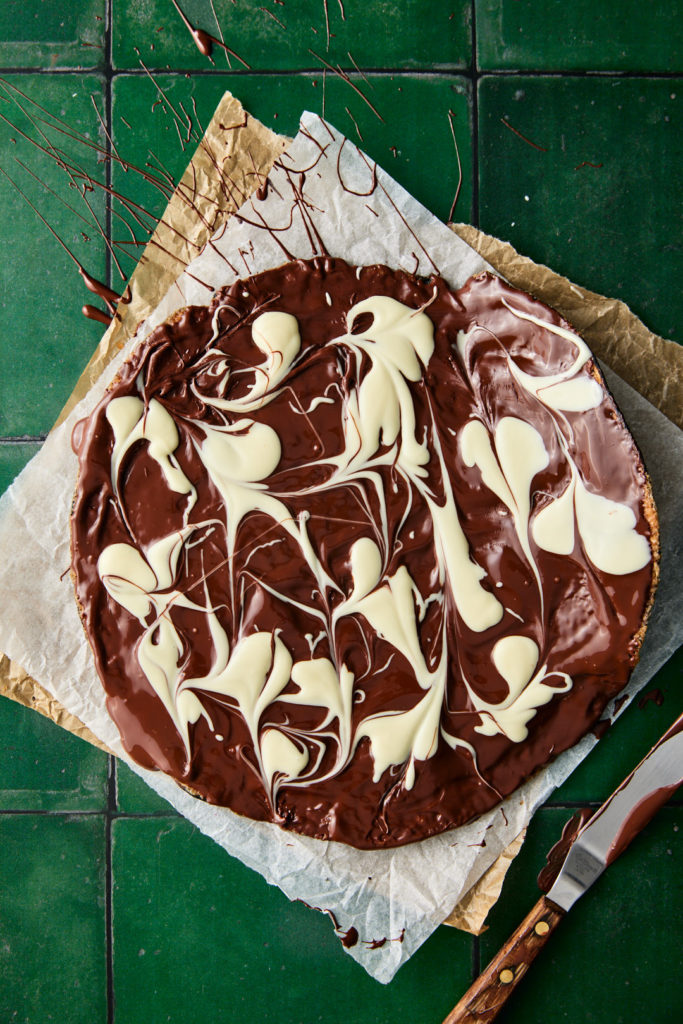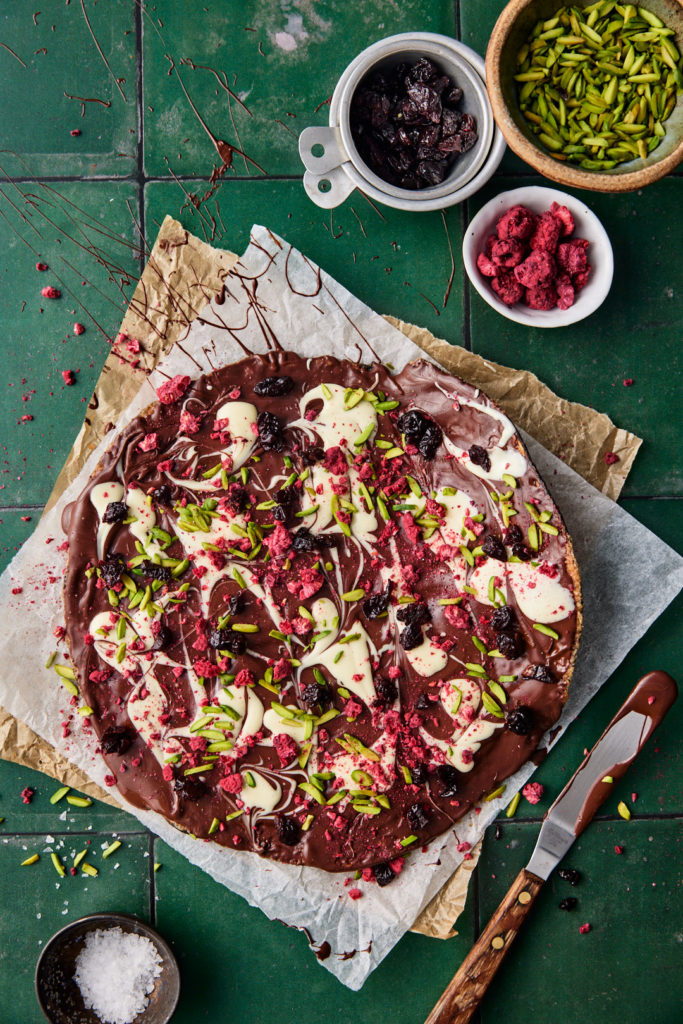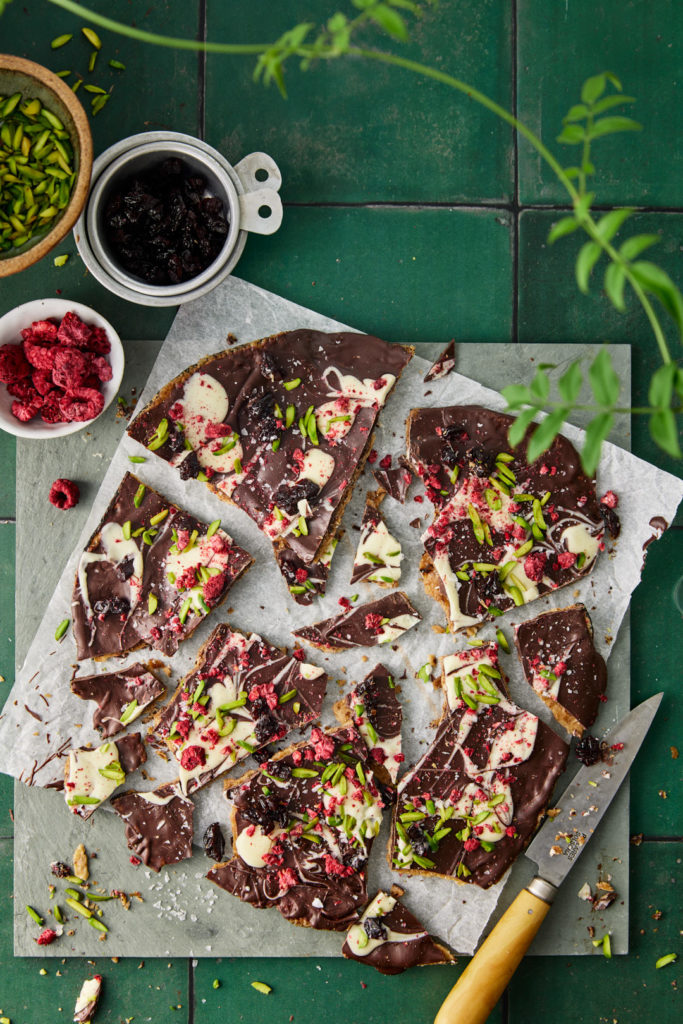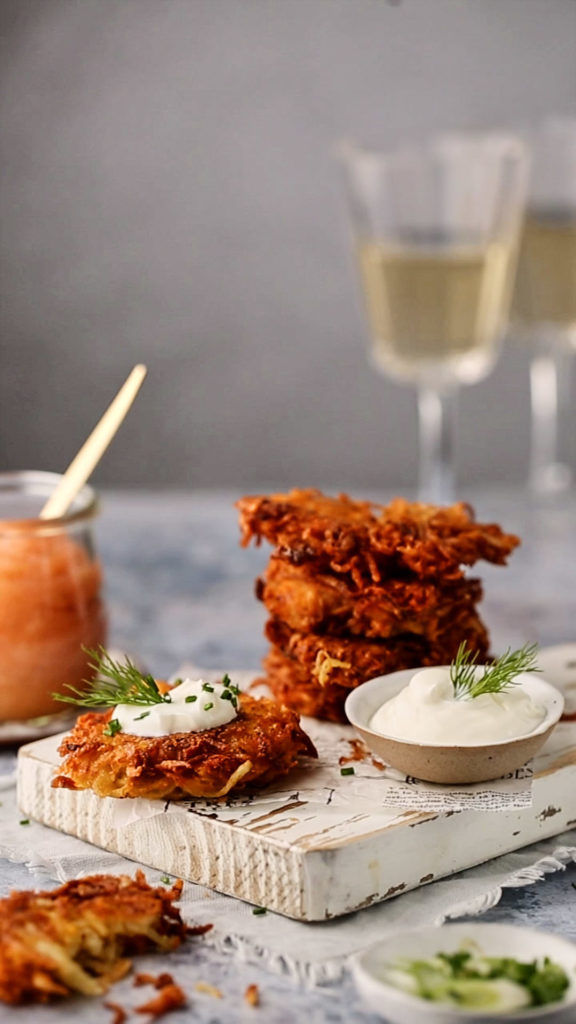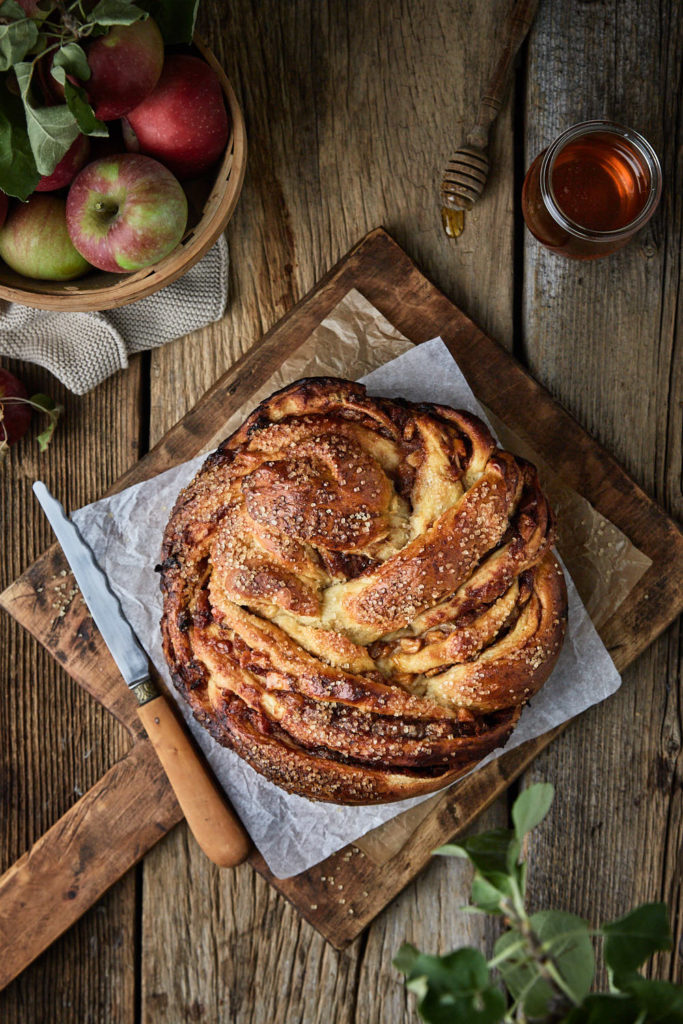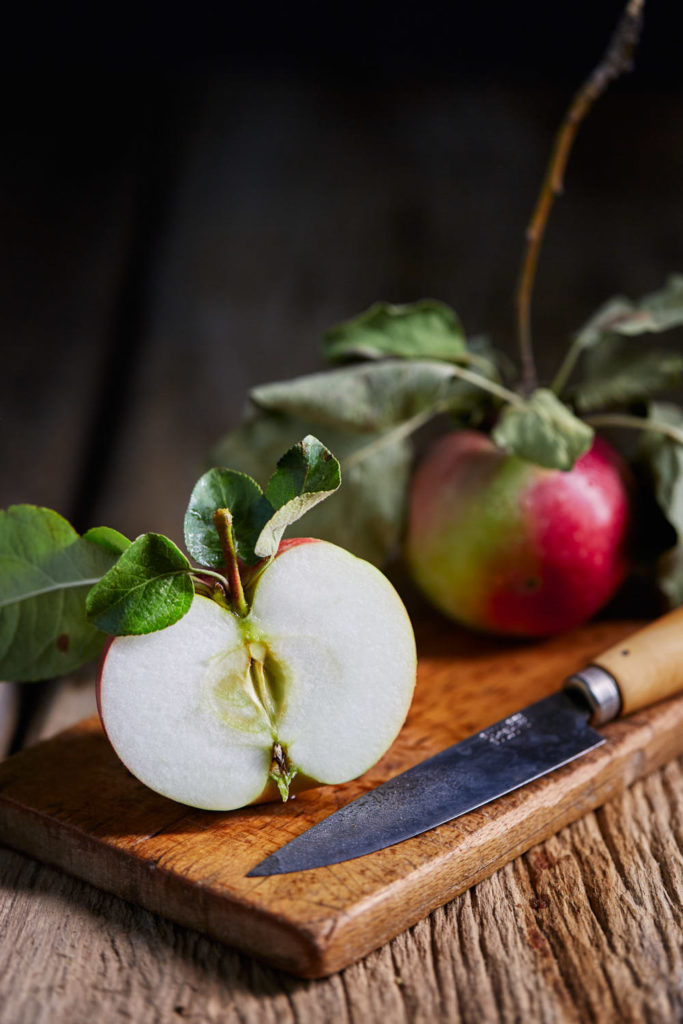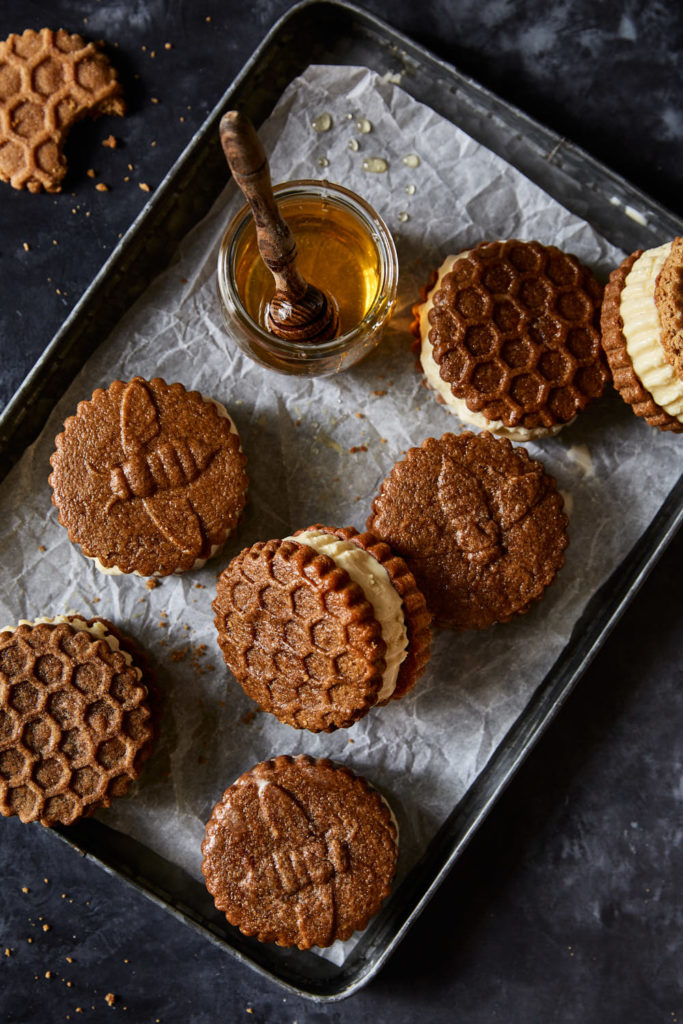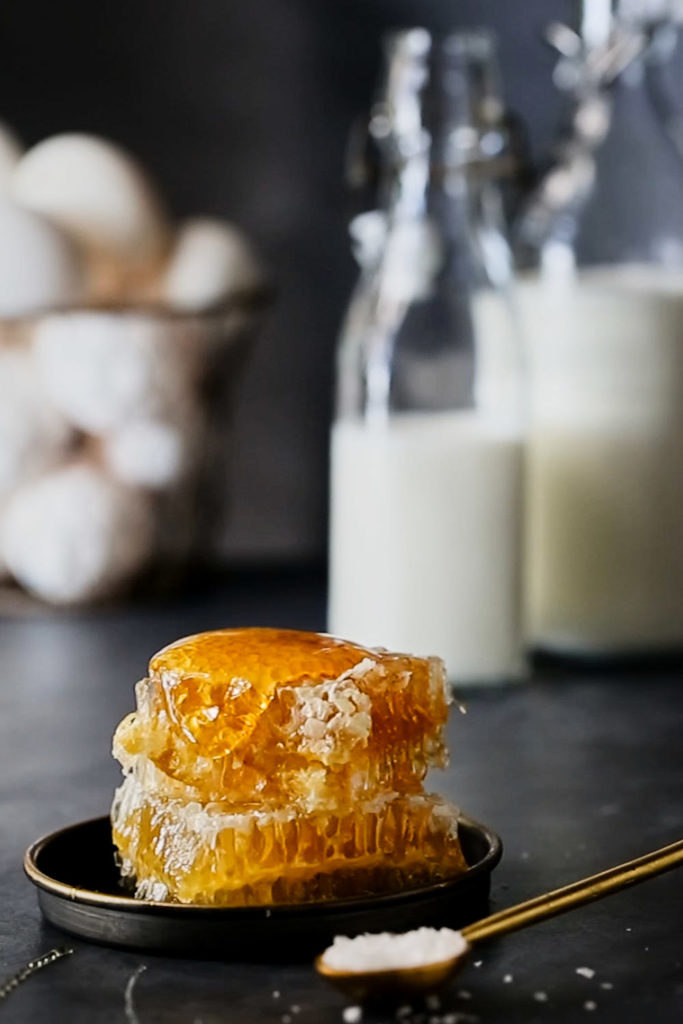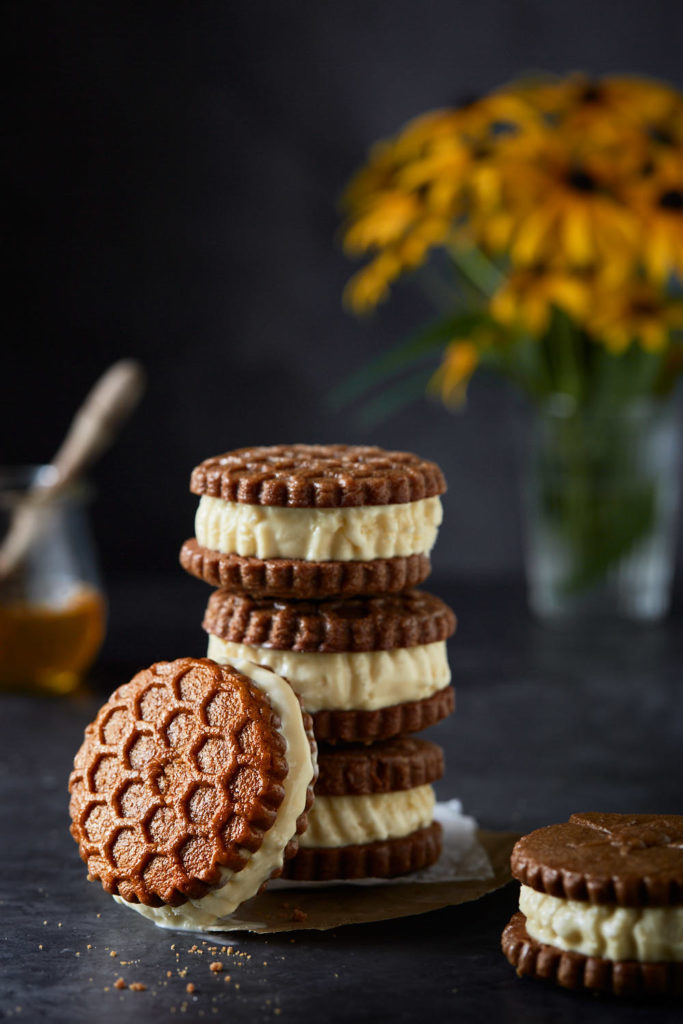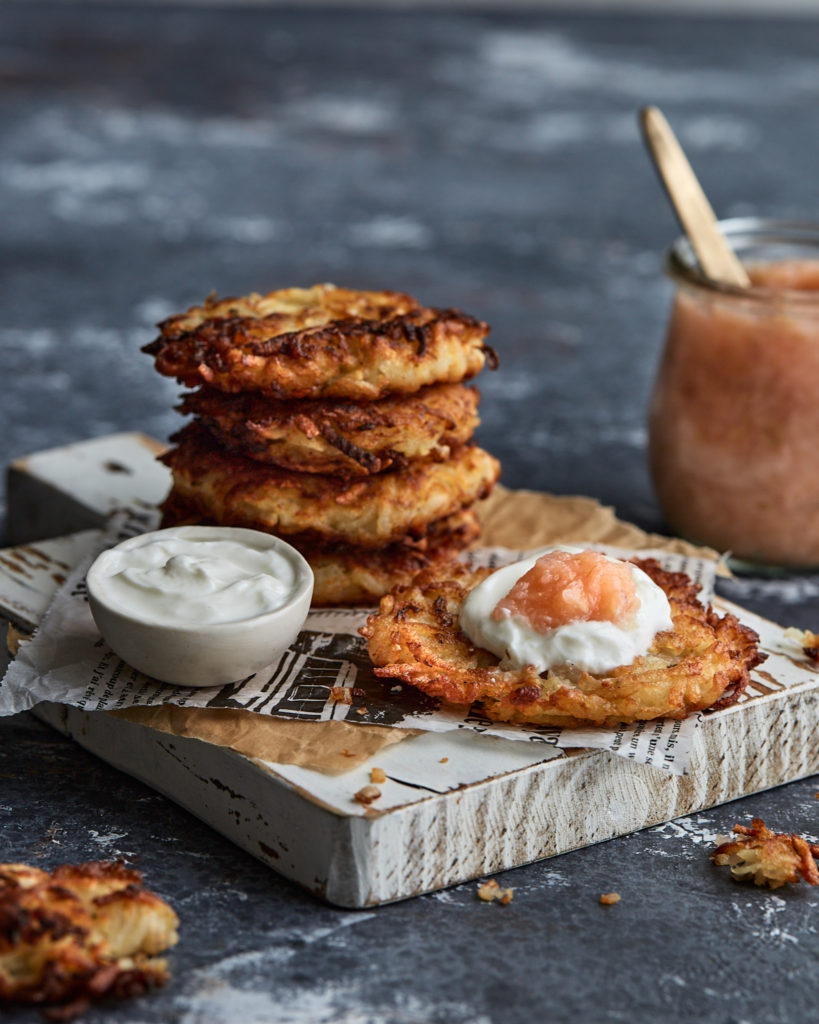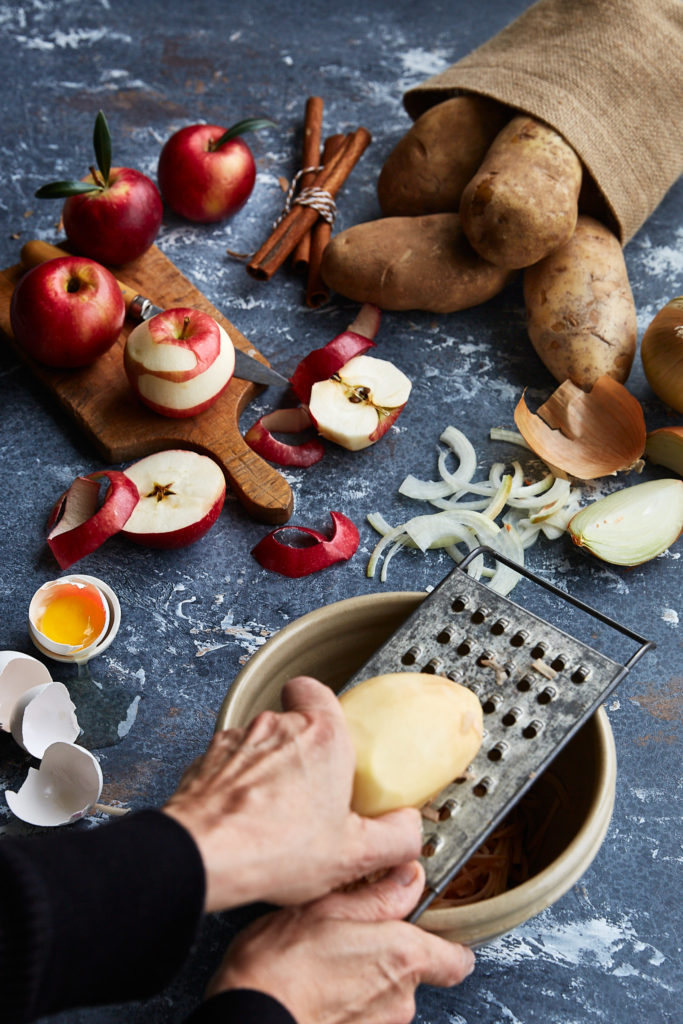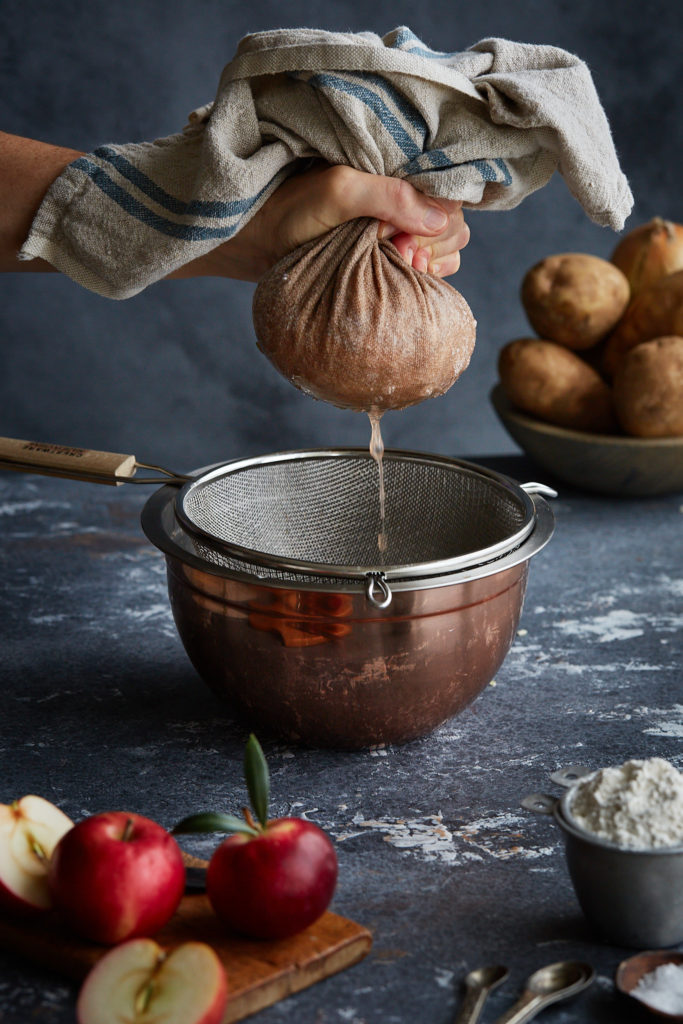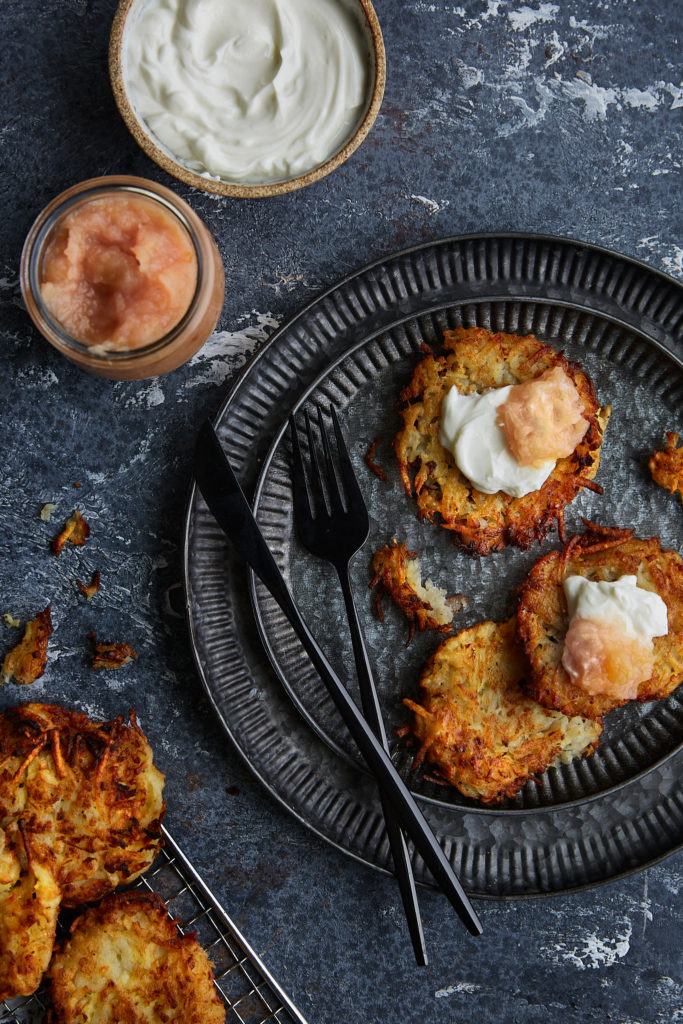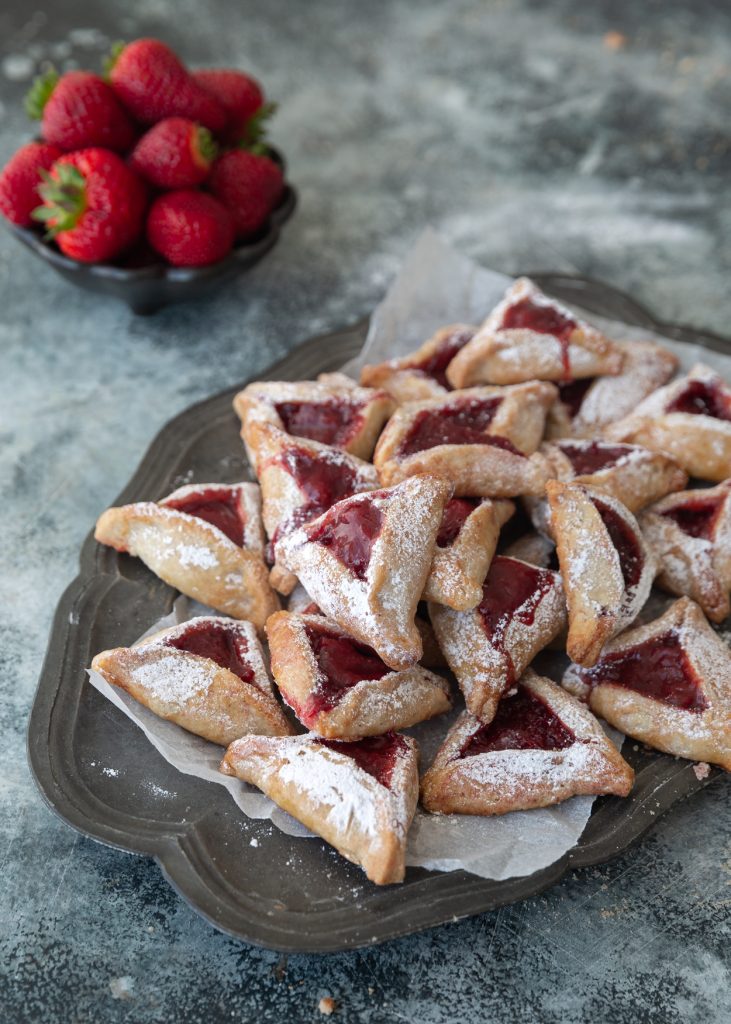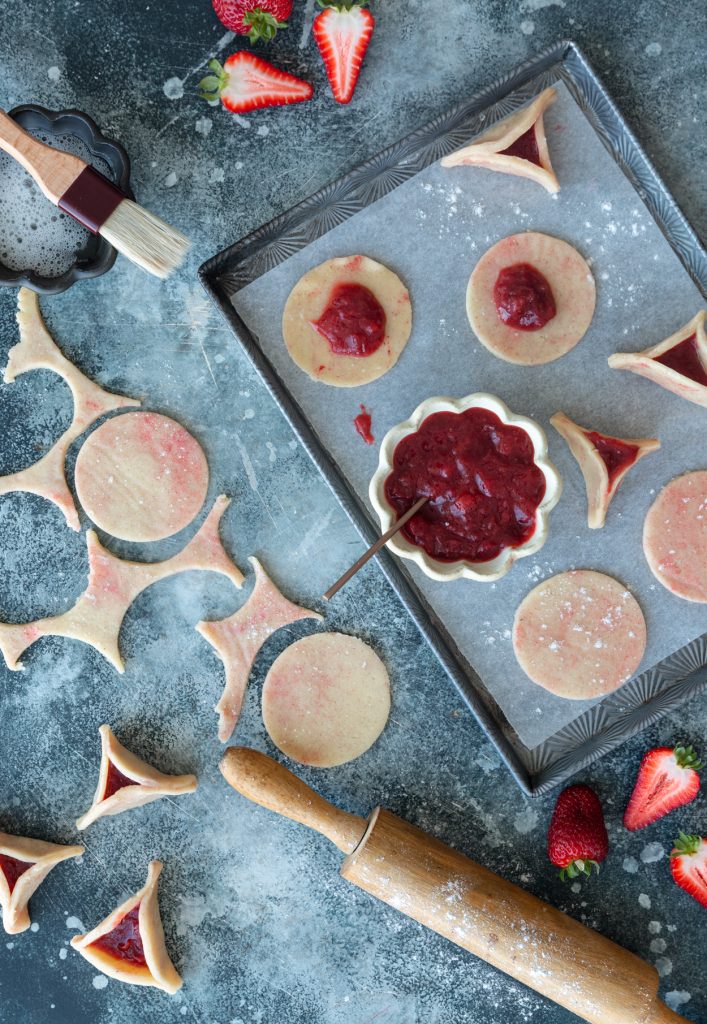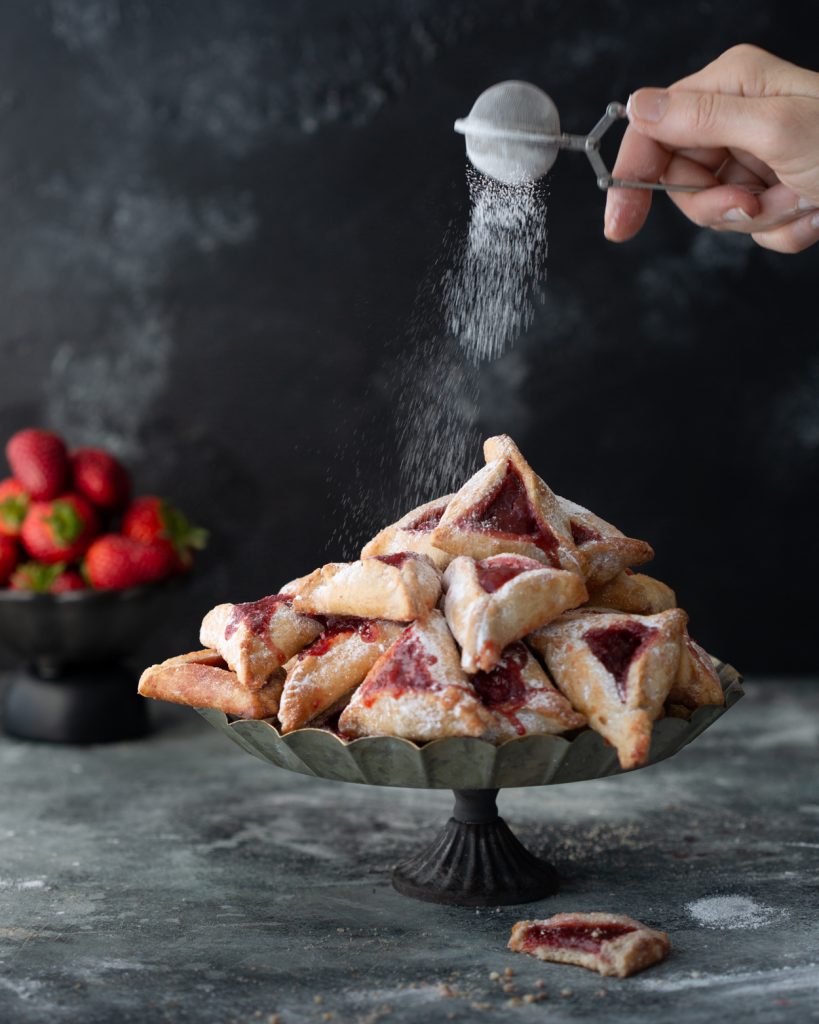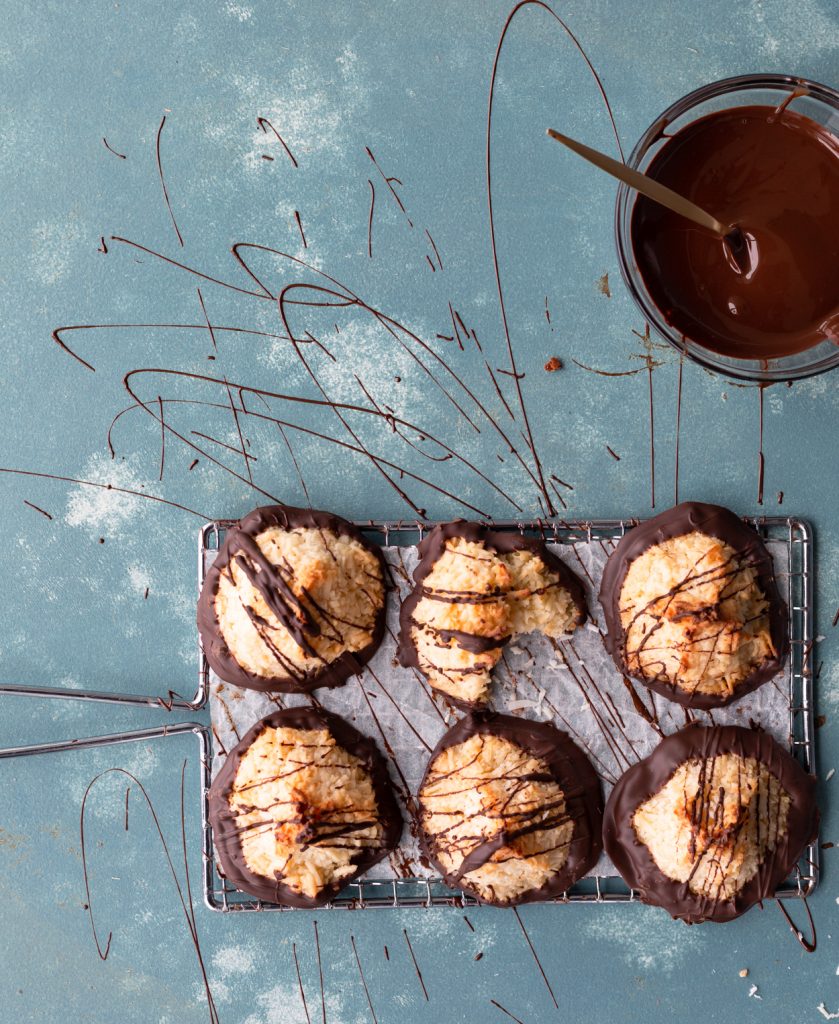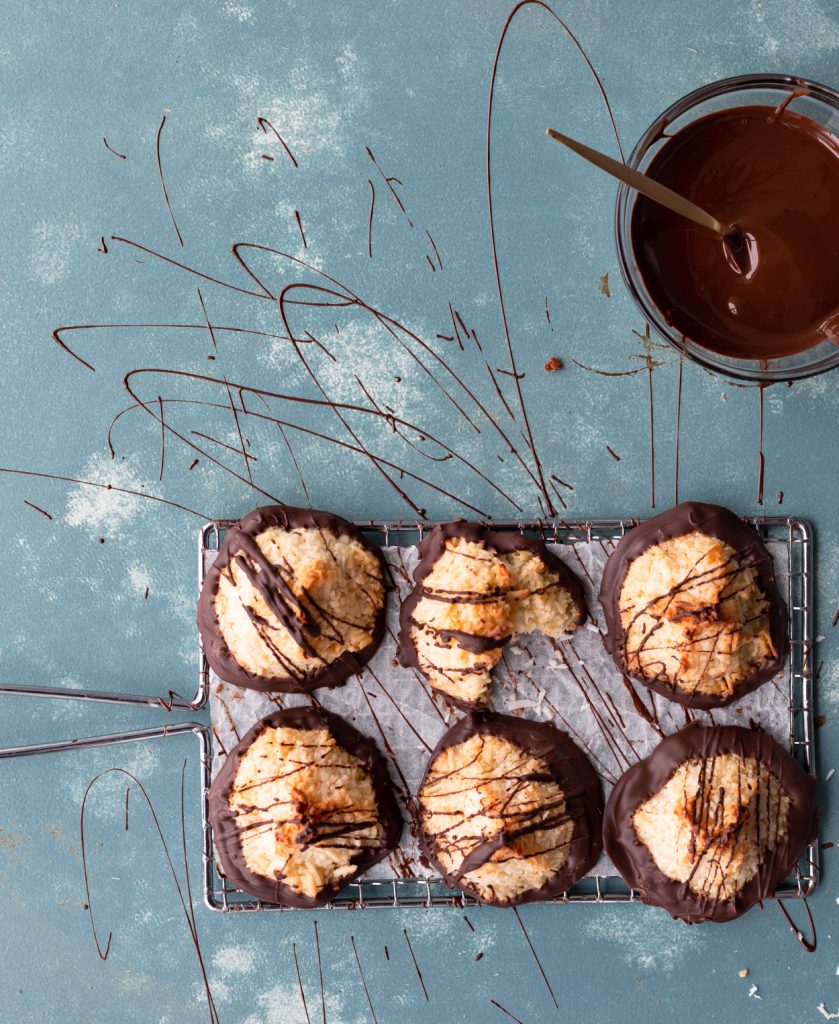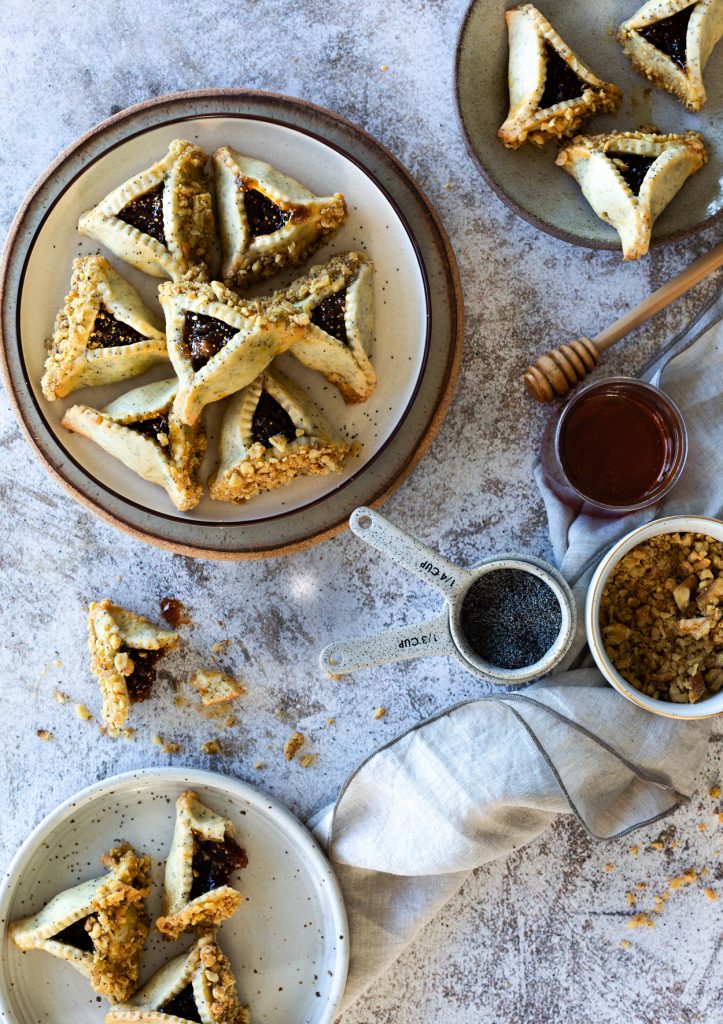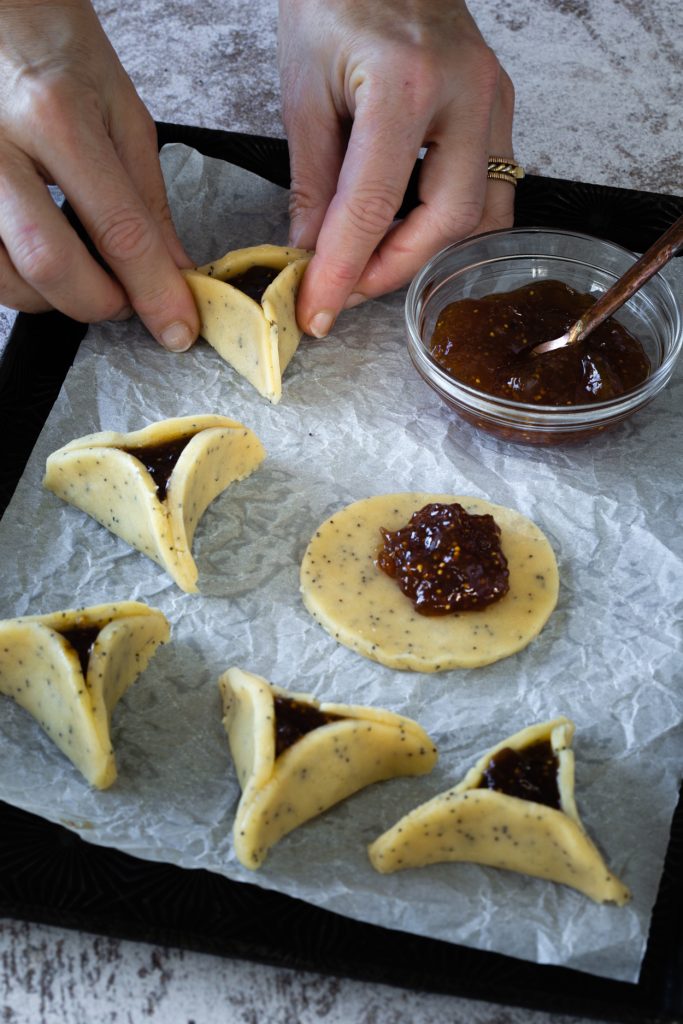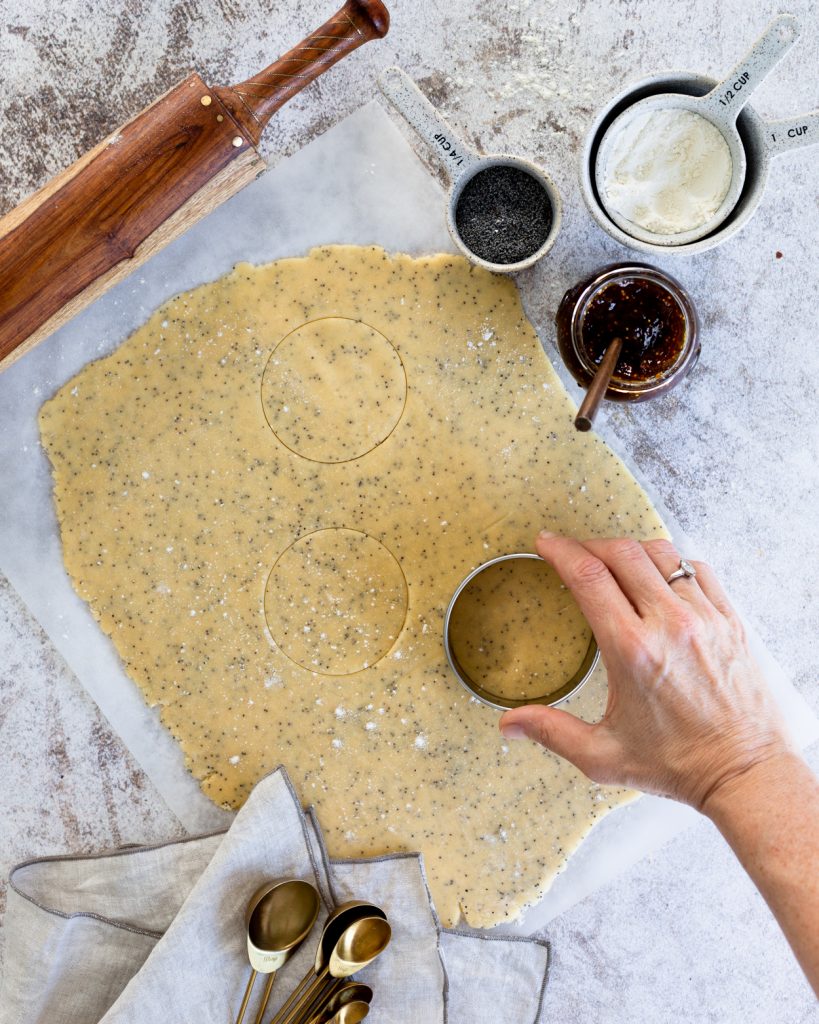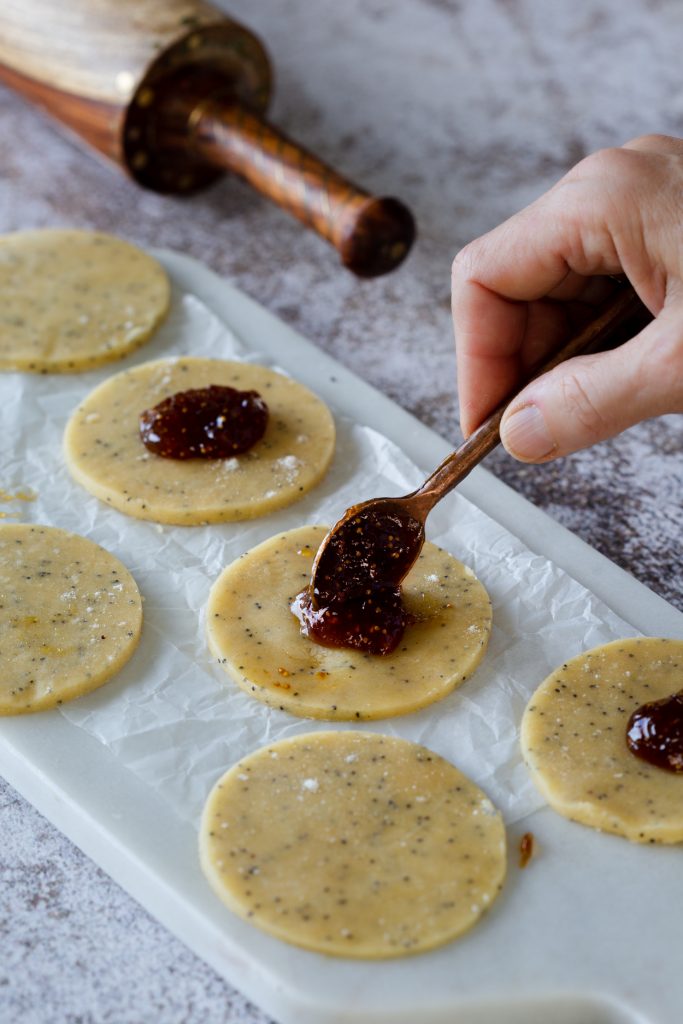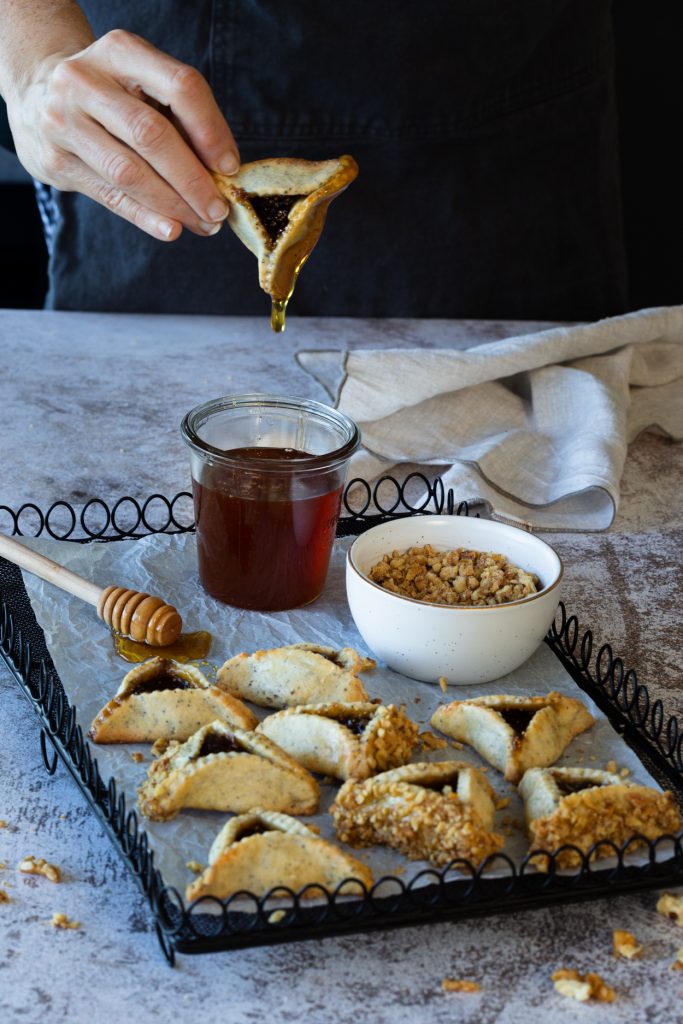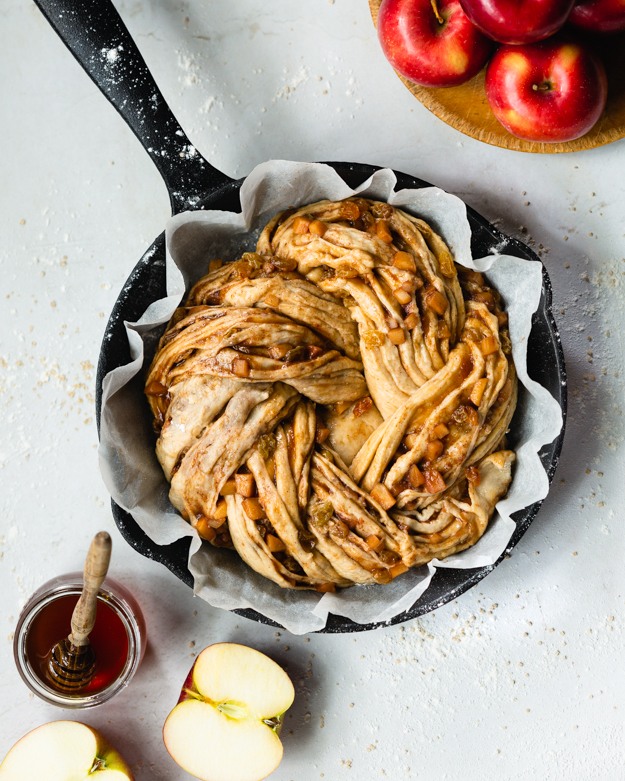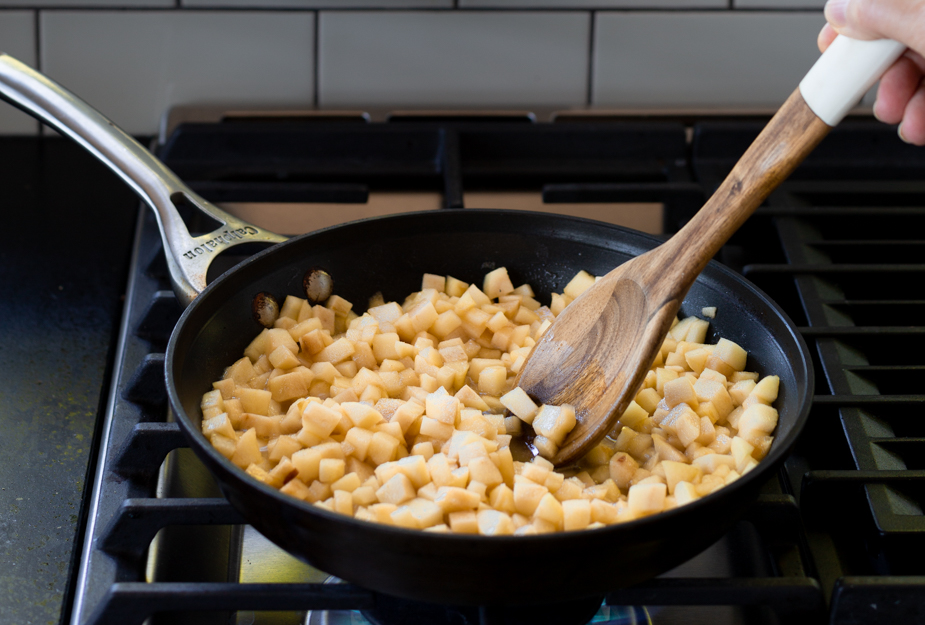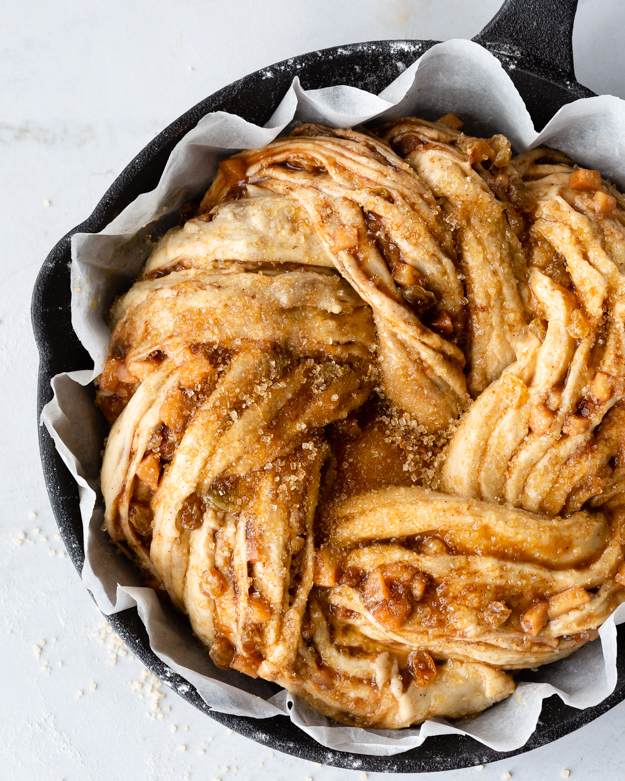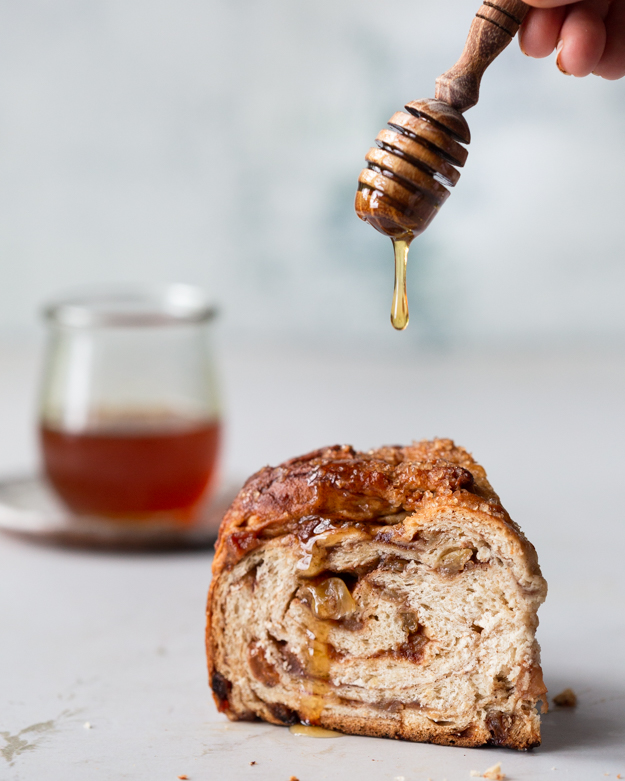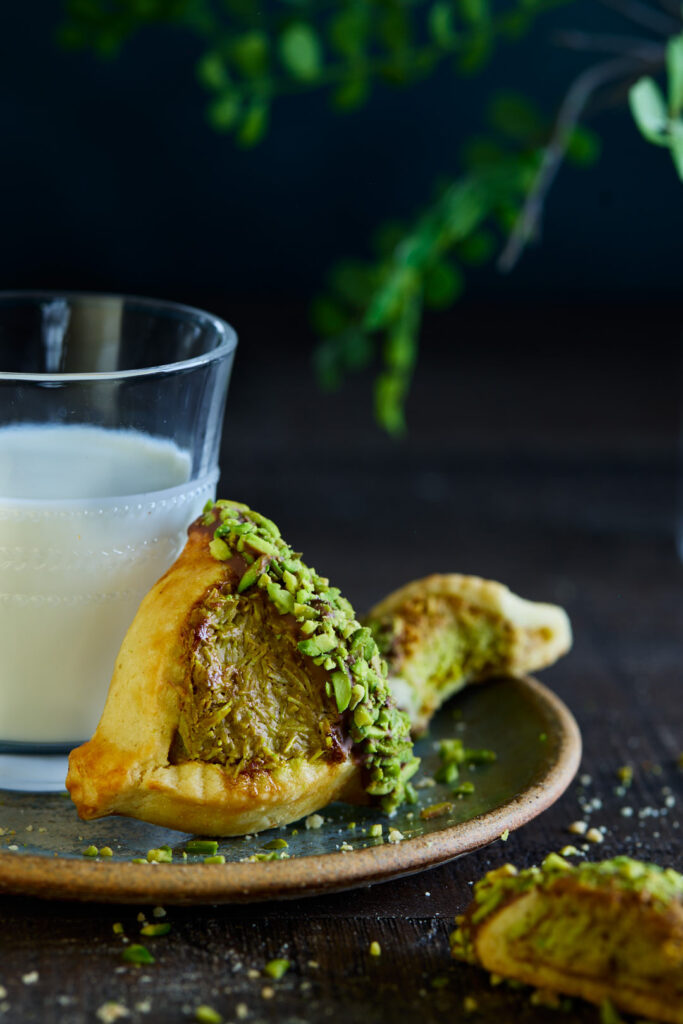
These Pistachio Hamentashen take inspiration from the viral Dubai Pistachio Chocolate bar, blending rich Middle Eastern flavours with a modern twist on the classic Purim treat. The filling is a decadent mix of crispy buttered kataifi (shredded phyllo), velvety pistachio paste, and creamy melted white chocolate, creating a luscious contrast of textures. Encased in a delicate, lightly sweetened cookie dough, each hamentashen bakes up to golden perfection. A finishing dip into milk chocolate along with a sprinkle of toasted pistachios, adds an extra layer of indulgence. These aren’t just hamentashen—they’re an experience.
When I was growing up, hamentashen always came from a bakery. I never really thought twice about it—that’s just how it was. It wasn’t until I got married and was introduced to my husband’s Aunt Carol that I realized people actually baked their own hamentashen. What a revelation.
Aunt Carol didn’t just bake hamentashen—she made hundreds of them every year, carefully packaging and mailing them to all her nieces and nephews across North America. Her hamentashen were something special: tender cookie dough wrapped around a sweet golden raisin and prune filling, dipped in honey and chopped toasted pecans for the perfect crunch.
She passed away suddenly in 2018, and I miss her dearly. She taught me not only how to bake hamentashen but also so many other lessons that have stayed with me. Every year, I make her hamentashen, and my family is happy. But as a food blogger, I also love to experiment—honouring tradition while creating new flavours.
This year’s creation is inspired by the viral Dubai Pistachio Chocolate bar—an indulgent mix of crispy buttered kataifi, pistachio paste, and white chocolate, all wrapped in a delicate cookie dough. After baking, they’re dipped in milk chocolate and finished with toasted pistachios. A little nod to tradition, with a modern, luxurious twist.
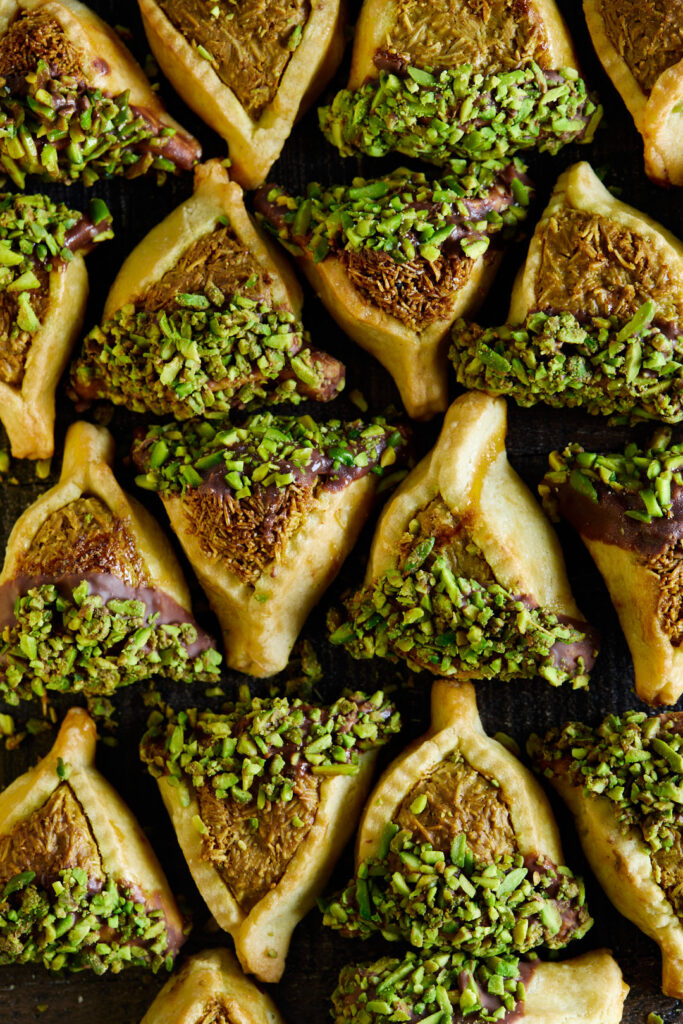
See them come together.
Keys to Success for Pistachio Hamentashen
- Kataifi can be tricky to find. This delicate shredded phyllo dough isn’t always stocked in regular grocery stores, but you might have luck at Middle Eastern or specialty markets. If not, Amazon to the rescue!
- Pistachio Paste vs. Pistachio Butter or Cream – Pistachio paste is made from 100% pure pistachios, while pistachio butter or cream usually contains added sugar and other ingredients. For this recipe, you want pure pistachio paste to get the best flavour and texture. It can be tricky to find in stores, but you can easily order it online.
- Pinch the corners tightly! To keep the filling from leaking out, make sure to pinch the corners of your hamentashen firmly. Press them well where the edges meet, ensuring they hold their triangular shape while baking. Chilling the assembled hamentashen before baking also helps them keep their shape.
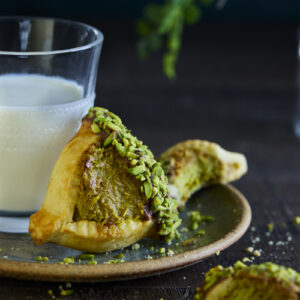
Pistachio Hamentashen (Viral Dubai Pistachio Chocolate Hamentashen)
Ingredients
Pistachio Filling
- 100 grams kataifi pastry (shredded phyllo dough)
- 40 grams unsalted butter
- 165 grams white chocolate, coarsely chopped
- 165 grams pistachio paste
- 12 grams vegetable oil
- 20 grams icing sugar
- 1/4 teaspoon Diamond Crystal Kosher salt, or 1/8 teaspoon Morton's Kosher salt
Hamentashen Dough
- 170 grams unsalted butter, removed from fridge 30 minutes before starting to make dough
- 133 grams granulated sugar
- 1 teaspoon vanilla bean paste or vanilla extract
- 1 large egg, room temperature
- 1/2 teaspoon Diamond Crystal Kosher salt, or 1/4 teaspoon Morton's kosher salt
- 320 grams all purpose flour
- 1 Tablespoon water
Assembly and topping
- 1 large egg white, well beaten
- 150 grams milk chocolate
- 100 grams shelled pistachios, toasted and finely chopped
Instructions
Pistachio Filling
- Chop kataifi into small pieces, about 2 cm. in length. Use your fingertips to gently separate the strands and fluff the kataifi.
- In a large skillet, melt butter. Add kataifi and toast over medium heat, stirring constantly, until it becomes golden brown. Set aside to let it cool.
- Place white chocolate into a medium sized heatproof bowl. Microwave on 50% power for 30 seconds. Stir and continue heating in additional 10-15 second bursts, until completely melted. Stir in pistachio paste, vegetable oil, icing sugar and salt.
- Pour white chocolate-pistachio paste mixture over browned kataifi. Using 2 forks or your hands, mix until all the kataifi is coated. Set aside.
Make dough
- In a stand mixer fitted with paddle attachment, cream butter and sugar until light and fluffy, about 2 minutes. Scrape down sides of the bowl. With motor running, add vanilla and egg, then mix to incorporate. Add flour and salt and mix on low until all the flour is incorporated. Add 1 Tablespoons of water and continue mixing until dough comes together. Squeeze a handful of dough. It should hold together. If it’s still crumbly, add another Tablespoon of water.
- Divide dough in half and roll each piece, between 2 sheets of parchment paper, to an ⅛” thickness. Chill rolled dough in fridge for one hour. (Dough will keep in fridge for 5 days or can be frozen for up to a month.)
Form Hamentashen:
- Remove one dough sheet from the fridge and place on work surface. Peel off top parchment sheet and gently lay it back in place. Flip the dough over; peel off and set top parchment layer aside. Use a 3-inch round cookie cutter (or upside-down glass) to stamp out as many rounds as possible, leaving as little space between them as possible so that you do not have too many scraps. Place rounds on parchment lined baking sheet, setting them 1½ inches apart. Set scraps aside.
- Brush the edge of the circles with water. Spoon about 1 Tablespoon of the pistachio filling into the center of each circle. Fold up three sides of the dough against the filling, forming a triangular shape. Pinch the edges and corners firmly so that the shape holds together. Repeat with remaining filling and dough. Scraps can be rerolled and chilled for at least 30 minutes before cutting and baking more hamentashen
- Preheat oven to 350°F. Chill unbaked hamentashen for about 30 minutes before baking. It will prevent the hamentashen from slumping and they will hold their shape much better. Brush chilled hamentashen with egg white.
- Before baking, add a second baking sheet under chilled hamentashen. The double baking sheets will prevent the bottom of the hamentashen from getting too brown, before the tops and sides are done. Bake the hamentashen, rotating baking sheet halfway through, until golden, 16-18 minutes. Let cool completely.
- Place milk chocolate into a medium sized heatproof bowl. Microwave on 50% power for 15 seconds. Stir and continue heating in additional 10-15 second bursts, until completely melted.
- Dip hamentashen into melted milk chocolate. Sprinkle on some chopped pistachios. Chill until chocolate is firm. Hamentashen should be stored in an airtight container for 5 days or frozen for up to a month.

